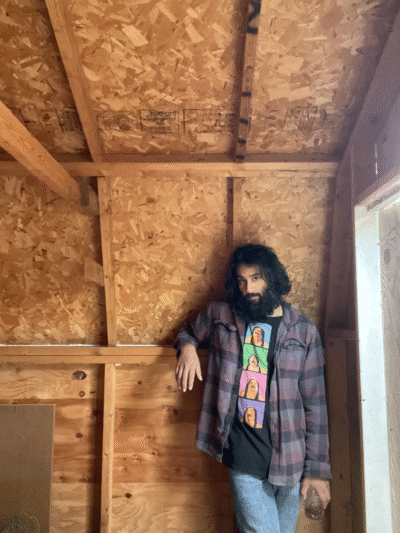Meet the Editor: Avee Chaudhuri
In this Meet the Editor series, we’re asking our assistant editors about their work on the Schooner and thoughts on their respective genres. Read our second installment with assistant fiction editor Avee Chaudhuri below.
Avee Chaudhuri
Assistant Fiction Editor
What brought you to UNL and to working with the Schooner?
I got an offer from UNL to study for a PhD here. I’d been published in the Schooner about a year before. It seemed a bit like kismet. I’m a mostly rational and measured creature but I felt like the universe was telling me something for once and being fairly unambiguous about it.
What do you look for when reading submissions?
I think I’m pretty ecumenical as a reader. There are stories I’ve sent up that have surprised me honestly. But I guess what I’m drawn to, irrespective of premise or conceit, is just a keeness to hold a reader’s attention and to never take that for granted.
Can you recall one piece you were moved by and why?
Jonathan Perry’s “McGinty” (Summer 2022). It’s a story about homicidal obsession and misplaced oedipal angst, but it’s also hilarious, a bonafide gutbuster. A real highwire act and I guess I’m moved by the boldness of it all. It’s like being seventeen again and watching Pedro Martinez pitch seven scoreless innings in the World Series. Just human excellence and self-assurance on display. I’m not even a Red Sox fan.
Has working as an editor for Prairie Schooner impacted your own creative work?
It’s made me more certain of my own voice and style or conceit or whatever. You see stuff in the queue that is really remarkable and unique to that writer and you realize if I try that I will fail horribly and embarrass myself. I read an incredible story recently in our queue that I can only describe as a “horny ghost story” or “unspoken throuple with ghost/demon/devil” that I hope we will accept. If I tried that premise it would read as a bit, and a tasteless one at that, whereas the writer in question has woven a very vivid and vulnerable portrait of marriage and the caesuras of marriage, as far as secret desires and anxieties…really wonderful stuff.
What draws you into a short story?
I think we often tell stories to reconcile ourselves to circumstances beyond our control, and to do this we require an idiom that is intrepid enough to still be meaningful when the world around us changes. I would like a sense of that at the outset of the story, not a précis for the entire narrative of course, but a sense of the linguistic dexterity and force (or grace) that will be exerted in order to countenance upheaval. I’m also a sucker for pirates.
How do you balance narrative clarity with artistic risks?
That’s a really good question. I have no idea. I think it’s the reader who ultimately determines where a story is situated on the clarity/risk gradient. Who’s that reader? Are they affable? How’s their forbearance as far as ‘difficulty’? It’s really hard to say. It’s beyond our control. I think as writers we have to be certain of our aesthetic. That’s all we can do. And be practical. Don’t submit your invective against humanity from the perspective of a dying Thirteenth Century Martian prophet to Reader’s Digest. (Do send it our way though.)
What would you like to see more of in contemporary fiction?
I would like to see more “screwing around” in fiction. We need comedy, for our sanity. I would like to see more screwing around from minoritized writers especially. Some writers are naturally very dignified and lucid and effortlessly oracular in their work. On the other hand, some of us are silly and gleefully inane. But listen, if there is only one way for a minority to write and write back and to get published, then what are we even doing here?

Avee Chaudhuri is from Wichita, Kansas. Some of his recent stories have appeared at Southwest Review, BRUISER and Peach Fuzz. He teaches literature and creative writing at the University of Nebraska-Lincoln.